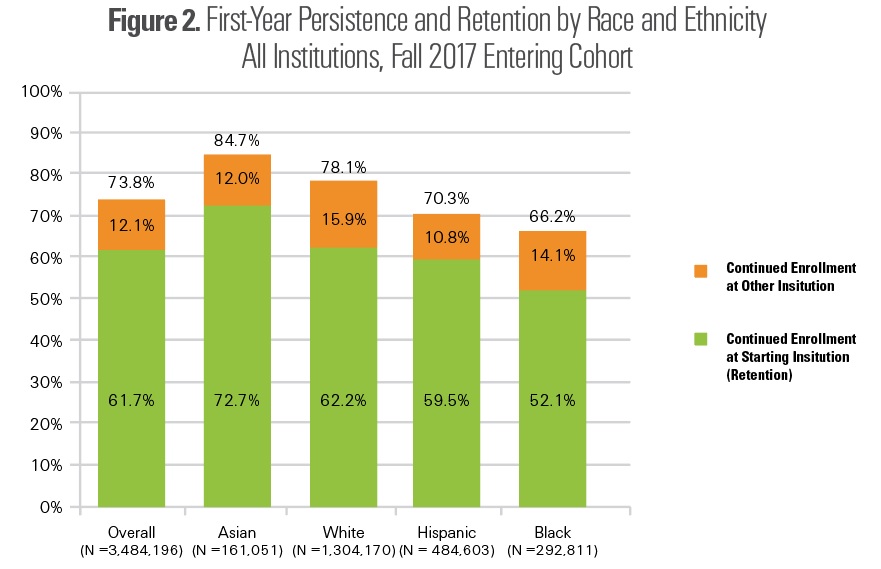You have /5 articles left.
Sign up for a free account or log in.
The national college persistence rate has increased by 2.2 percentage points during the last eight years, according to new data released by the National Student Clearinghouse Research Center, which is able to track the progress of 97 percent of undergraduates who are enrolled at degree-granting postsecondary institutions that are eligible to receive federal financial aid.
The center found that 74 percent of the 3.5 million students who enrolled in college for the first time in the fall of 2017 persisted one year later, meaning they were still enrolled in college or had earned a credential at any higher education institution. But despite the slight increase, more than a quarter of all new college students are leaving higher education in their first year. And the center's new data show wide persistence gaps among different types of institutions and across racial and ethnic lines.
For example, roughly 85 percent of Asian American students were still enrolled at the same college (73 percent) or another institution (12 percent). The overall persistence rate for white students was 78 percent. It was 70 percent for Hispanic students and 66 percent for black students.
The data also included how students in different types of popular fields of study persist.
“The likelihood of continuing beyond the first year varies depending on the starting major, with students in engineering bachelor’s degree programs five percentage points more likely to persist than those majoring in business B.A. programs," Doug Shapiro, the center's executive director, said in a written statement. "This provides an important lens for understanding academic and transition issues early during the first year, and can help students see what it takes to succeed in college."





